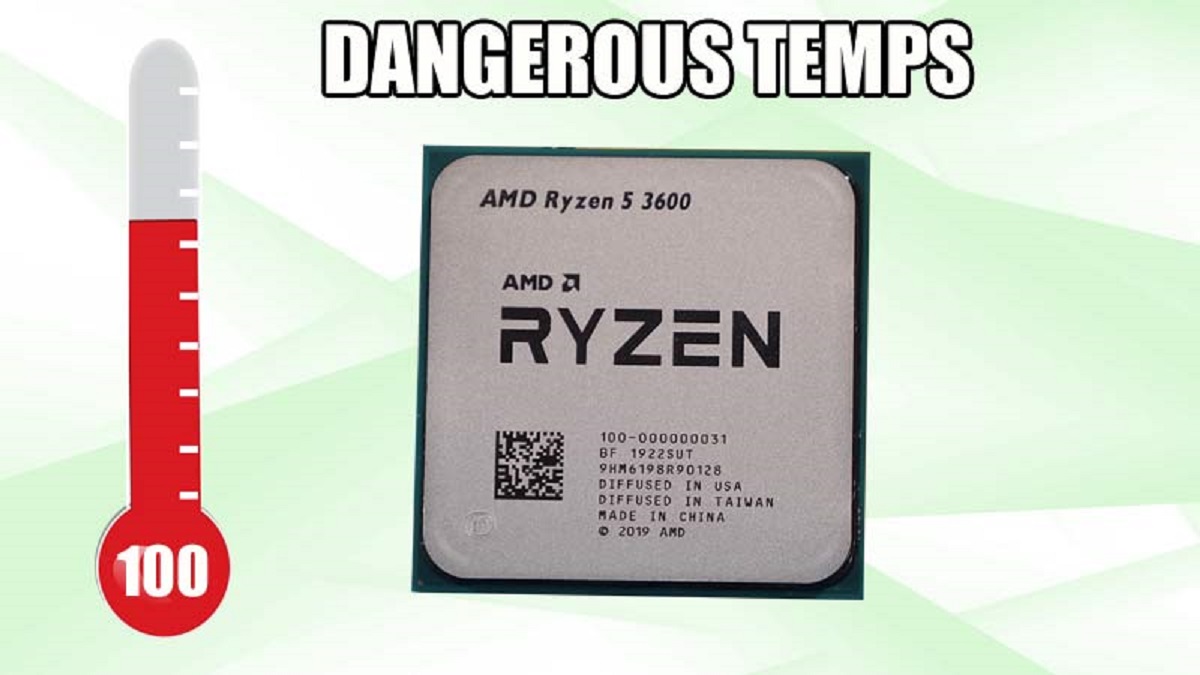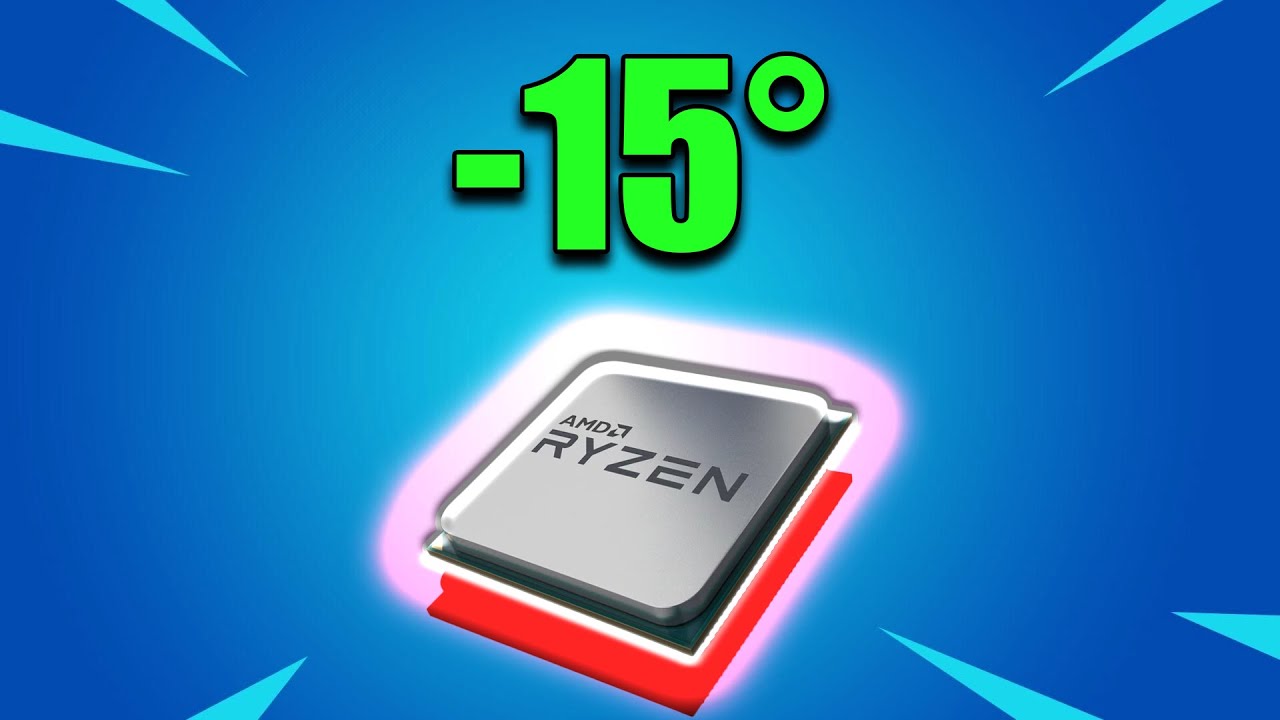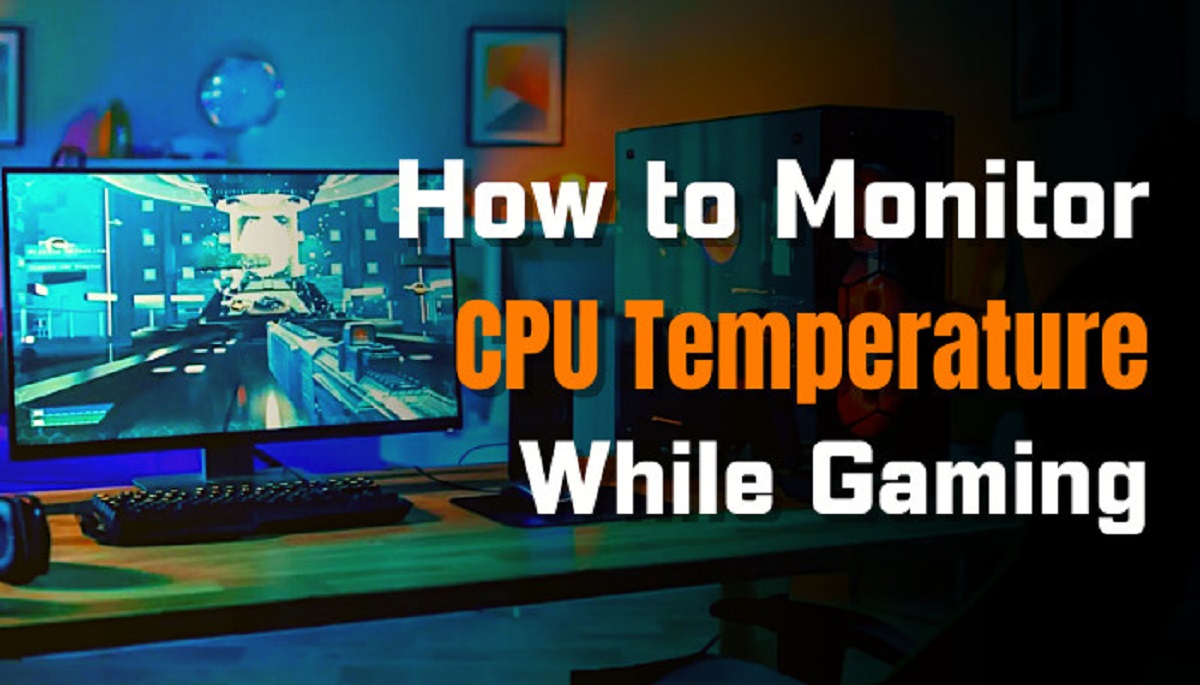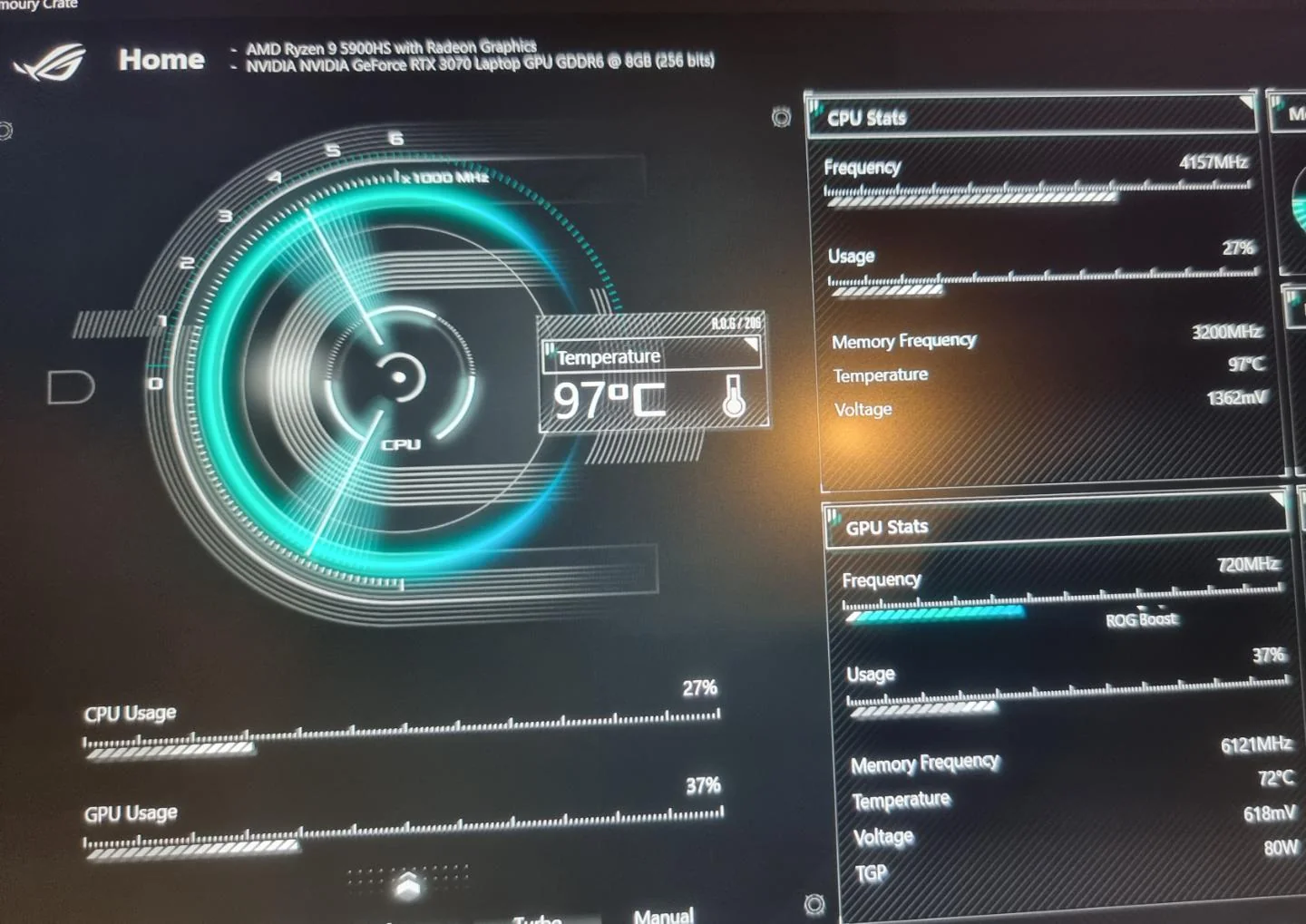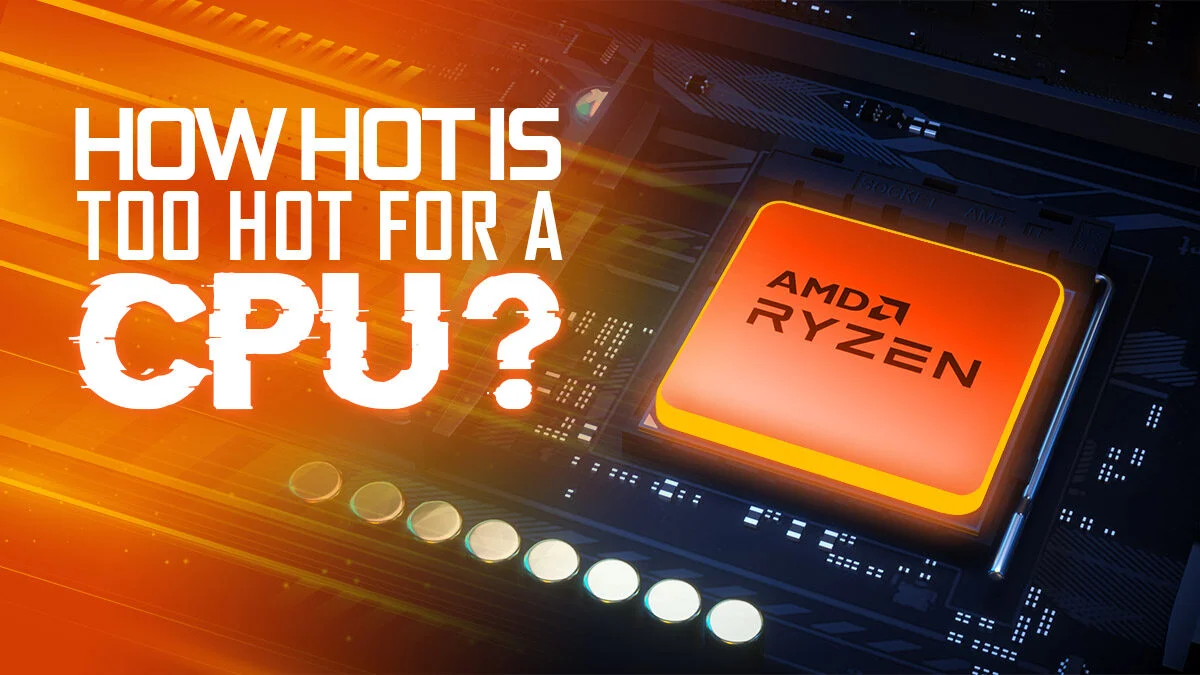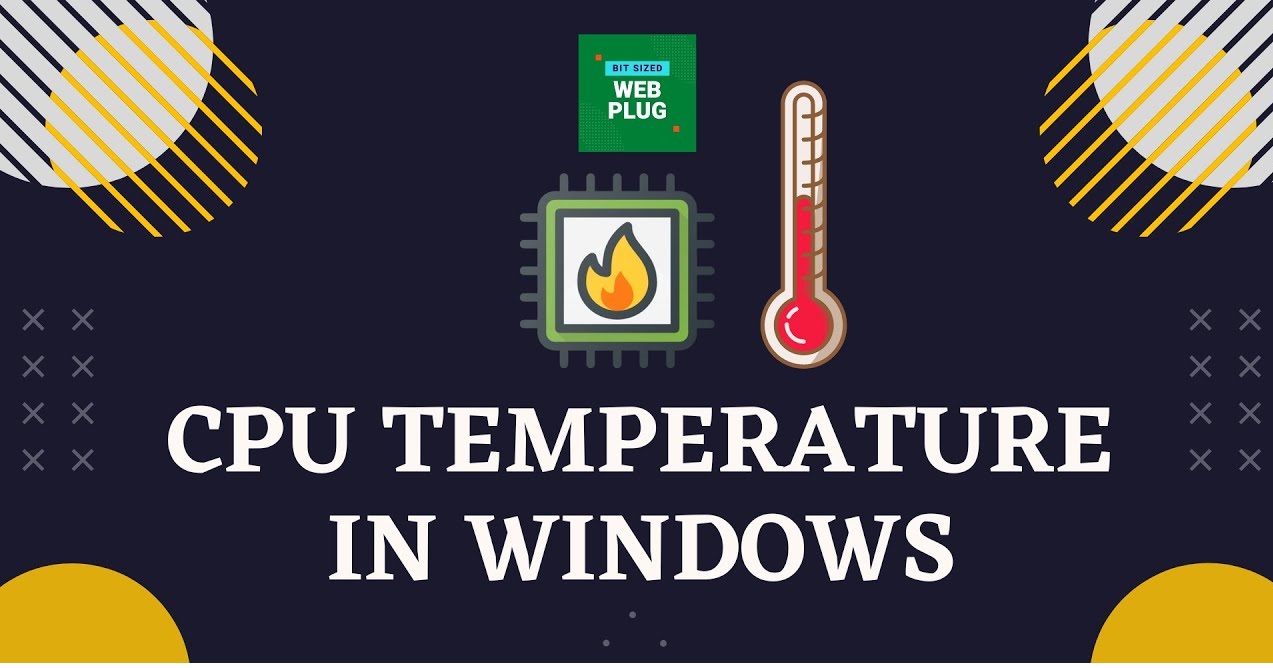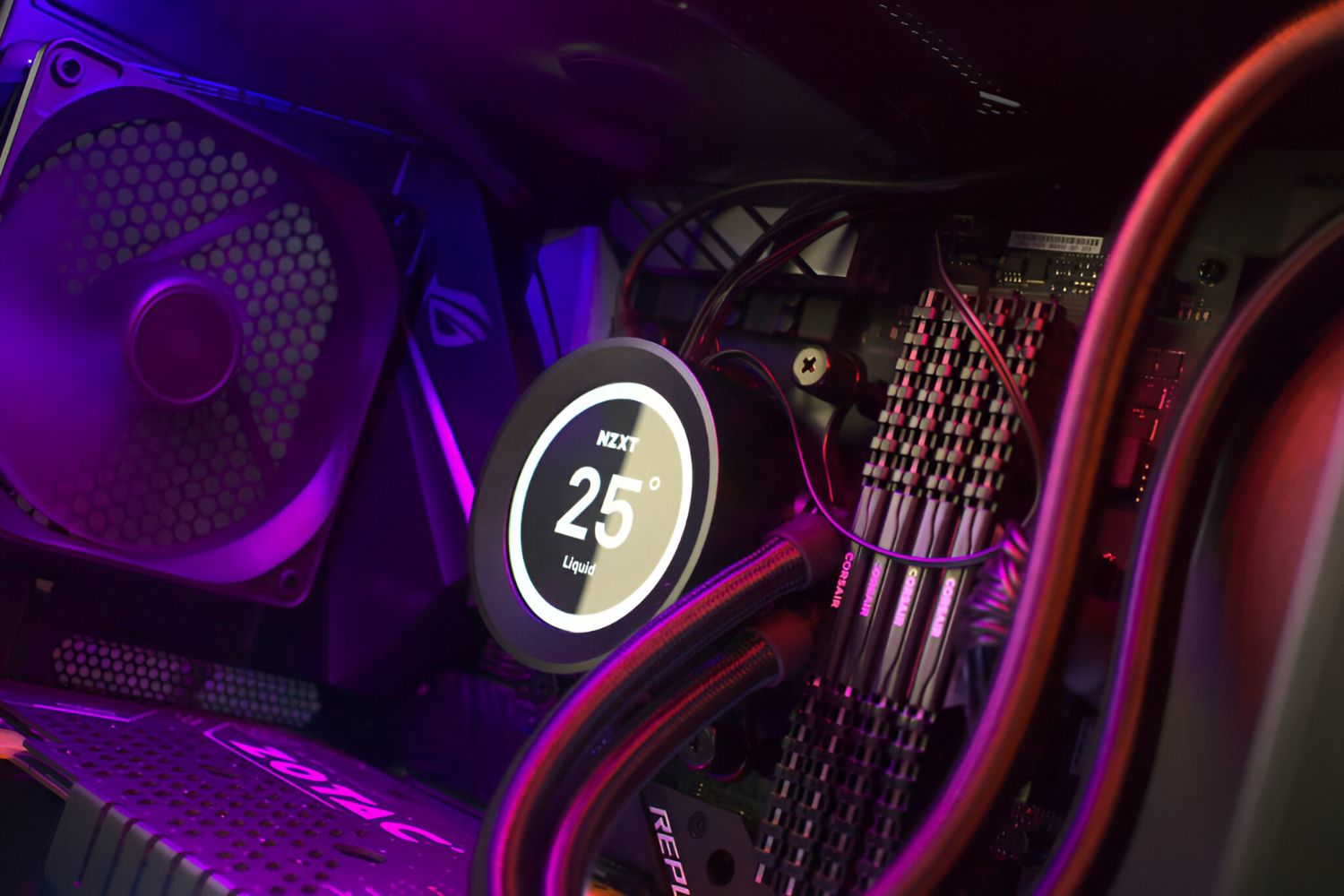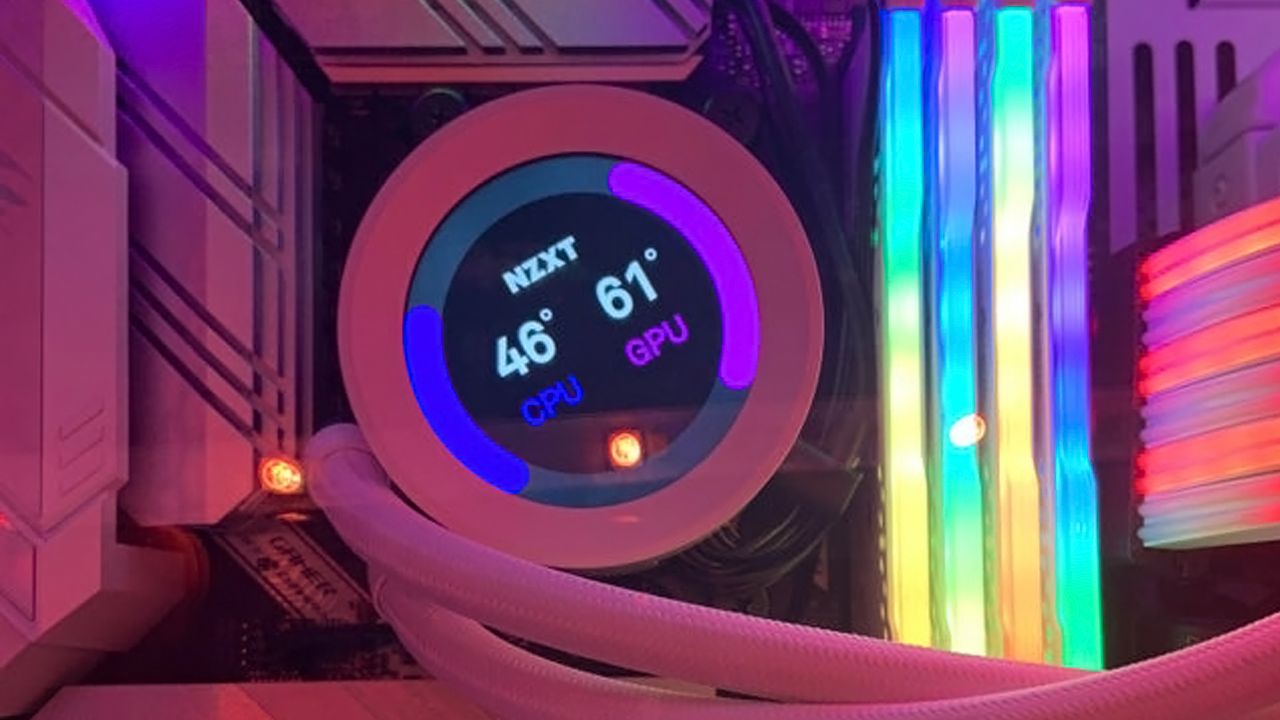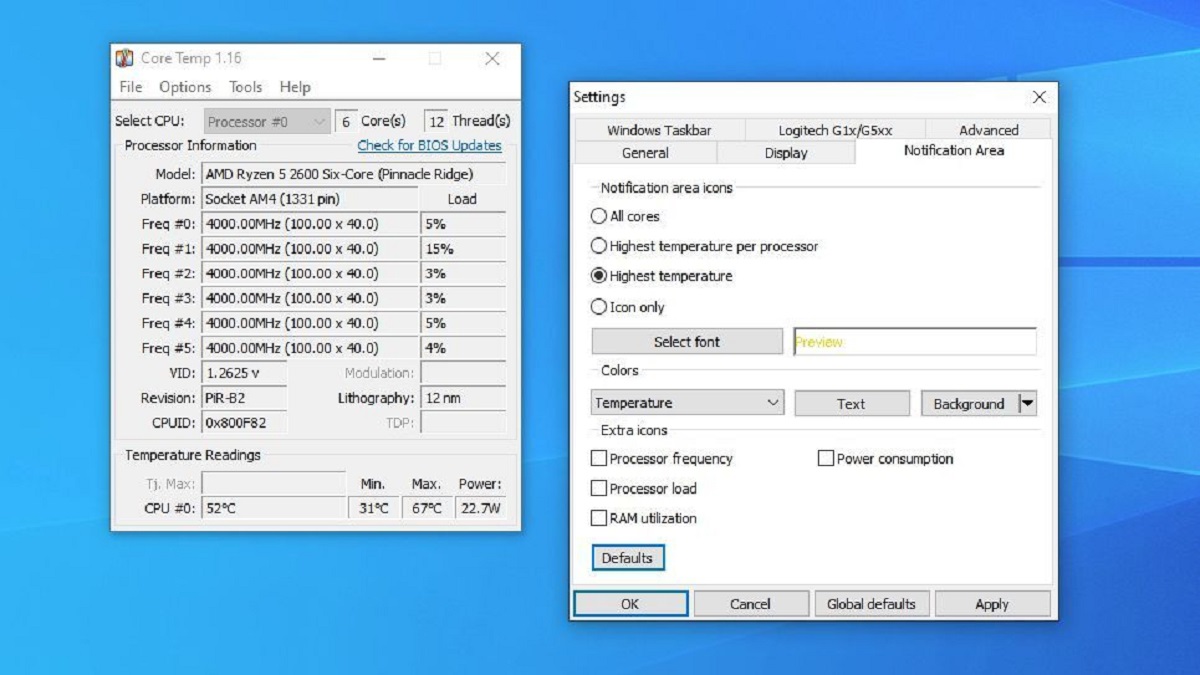Introduction
Computer CPUs (Central Processing Units) are the brains of our electronic devices, from desktop computers to laptops and smartphones. They handle all the necessary calculations and execute commands to keep our devices running smoothly. However, just like any technological component, CPUs generate heat as a byproduct of their operations. This heat can be problematic if not properly managed, as it can lead to reduced performance, instability, and even permanent damage.
In this article, we will explore the importance of CPU temperature management and discuss the temperature range considered ideal for efficient and safe CPU operation. Additionally, we will examine the signs of CPU overheating, the factors that influence CPU temperature, and the consequences of allowing your CPU to reach dangerously high temperatures. Finally, we will provide some tips and recommendations to help you effectively prevent CPU overheating.
Understanding the temperature limits and proactive measures to maintain a CPU within safe operating temperatures is crucial for both casual users and power users who push their systems to the limit. By following these guidelines, you can optimize your computer’s performance, extend its lifespan, and avoid costly repairs or replacements.
What is CPU Temperature?
CPU temperature refers to the measurement of how hot or cool the central processing unit of a computer is. The CPU is the core component responsible for executing all the tasks and calculations necessary for the operation of the computer. As the CPU performs these operations, it generates heat due to the flow of electrical currents and the resistance encountered by the underlying semiconductor materials.
The temperature of a CPU is measured in degrees Celsius (°C) or Fahrenheit (°F) and provides an indication of how effectively the heat generated by the CPU is being dissipated. Most modern CPUs are designed to operate within a specific temperature range to ensure optimal performance and longevity. Operating the CPU within this temperature range is essential to prevent overheating and potential damage.
Monitoring CPU temperature is crucial because excessive heat can impact performance, stability, and reliability. If the CPU temperature exceeds safe limits, the system may automatically throttle down its clock speed to reduce heat generation, resulting in decreased performance. In extreme cases, the system may shutdown abruptly to prevent permanent damage caused by overheating. Therefore, understanding and managing CPU temperature is crucial for maintaining system health and preventing unnecessary complications.
It is important to note that different CPUs have different temperature limits, depending on factors such as their architecture, manufacturing process, and power consumption. Additionally, the acceptable temperature range may also vary depending on the specific brand and model of the CPU. Therefore, it is essential to refer to the manufacturer’s guidelines or specifications to determine the recommended temperature range for your specific CPU model.
The Ideal Temperature Range for a CPU
The ideal temperature range for a CPU typically falls between 30°C (86°F) and 60°C (140°F) under normal operating conditions. This range ensures optimal performance and longevity while preventing overheating. However, it’s important to note that each CPU has its own specific temperature range outlined by the manufacturer, so it’s essential to refer to the documentation or specifications for your particular CPU model.
At the lower end of the temperature range, around 30°C (86°F), the CPU is operating at a relatively cool temperature. This is often the case during idle or low-demand tasks when the CPU isn’t under heavy load. It’s normal for the temperature to fluctuate within this range depending on the workload.
As the CPU undergoes more intense tasks, such as gaming, video rendering, or running demanding software, the temperature tends to rise. Under high load, it is expected for the temperature to reach 60°C (140°F) or slightly above, but it should not surpass the specified threshold for your CPU. This range ensures that the CPU is operating efficiently without experiencing thermal throttling or instability.
It is important to note that exceeding the maximum temperature limit specified by the manufacturer can lead to significant consequences, including reduced CPU lifespan and potential permanent damage. Therefore, it is crucial to closely monitor the CPU temperature and take necessary precautions to keep it within the recommended range.
Keep in mind that the ambient temperature in the environment can also impact CPU performance and temperature. Higher ambient temperatures, poor ventilation, or inadequate cooling can result in higher CPU temperatures. In such cases, it may be necessary to take additional steps to ensure proper cooling, such as using external fans, upgrading the cooling system, or optimizing airflow within the computer case.
By maintaining your CPU within the ideal temperature range, you can ensure optimal performance, system stability, and longevity, all while preventing the risk of overheating and potential damage to your valuable hardware.
Signs of Overheating
Identifying the signs of CPU overheating is crucial for addressing the issue promptly and preventing potential damage to your computer system. Here are some common signs to look out for:
- Frequent System Freezes and Crashes: If your computer frequently freezes or crashes, especially during resource-intensive tasks, it could be a sign of CPU overheating. When the CPU temperature exceeds safe limits, the system may automatically shut down or reduce performance to prevent damage.
- Sudden Shutdowns: If your computer shuts down unexpectedly without warning, it may be due to overheating. This is a precautionary measure to protect the CPU from permanent damage caused by excessive heat.
- Unusual Fan Noise or Increased Fan Speed: When the CPU temperature rises, the cooling system has to work harder to dissipate the heat. This can lead to increased fan speed, resulting in loud or unusual noises. If you notice a significant increase in fan noise, it may indicate that the CPU is running hot.
- Sluggish or Slow Performance: Overheating can cause the CPU to throttle down its clock speed to reduce heat generation. As a result, your computer may experience slower performance and take longer to complete tasks.
- Elevated Temperature Readings: Monitoring software can provide real-time temperature readings of your CPU. If you notice consistently high temperatures, especially close to or exceeding the maximum recommended limit, it indicates that your CPU is overheating.
- Visual Clues: Sometimes, you may notice physical signs of overheating, such as a hot and uncomfortable touch on the laptop surface, or a burning smell coming from the computer. These signs should not be ignored, as they indicate that the internal components, including the CPU, are reaching dangerous temperatures.
If you experience any of these signs, it’s crucial to take immediate action to address the overheating issue. Ignoring the signs could lead to permanent CPU damage, decreased performance, and even complete system failure.
In the next section, we will delve into the factors that can influence CPU temperature and discuss why proper cooling is essential.
Factors that Influence CPU Temperature
1. CPU Design and Architecture: The design and architecture of the CPU play a significant role in determining its temperature. Factors such as transistor density, power consumption, and the efficiency of the CPU’s internal cooling mechanisms can all affect how much heat is generated.
2. CPU Voltage and Clock Speed: Increasing the voltage or clock speed of a CPU tends to increase its temperature. Overclocking, which involves running the CPU at higher frequencies than its default settings, can significantly raise the temperature if proper cooling is not in place.
3. CPU Load and Usage: The amount of computational load placed on the CPU impacts its temperature. Running resource-intensive tasks like gaming, video editing, or running multiple applications simultaneously can cause the CPU to generate more heat.
4. Ambient Temperature: The ambient temperature in the environment where the computer is located can also influence the CPU temperature. Higher ambient temperatures can make it more challenging for the cooling system to dissipate heat, leading to a rise in CPU temperature.
5. Cooling System Efficiency: The effectiveness of the cooling system in maintaining a stable CPU temperature is crucial. Factors such as the type of cooling solution (air cooling, liquid cooling), the quality of thermal paste, the number and size of fans, and adequate airflow within the computer case can all impact how efficiently heat is transferred away from the CPU.
6. Case Ventilation and Airflow: Proper case ventilation is essential for efficient heat dissipation. A well-ventilated case with proper airflow ensures that hot air is expelled from the system, preventing heat buildup around the CPU and other components.
7. Overclocking: Overclocking, while offering performance boosts, tends to increase the CPU’s temperature due to higher voltage and clock speeds. Adequate cooling measures must be in place when overclocking to prevent overheating.
8. Dust and Dirt Accumulation: Over time, dust and dirt can accumulate on the cooling system components, including the CPU heatsink and fan. This buildup can hinder airflow and heat dissipation, leading to higher CPU temperatures. Regular cleaning and maintenance can help prevent dust-related issues.
Keep in mind that these factors are interrelated and can collectively contribute to CPU temperature fluctuations. It’s important to consider all of these factors and take appropriate measures to maintain optimal CPU temperatures and ensure system stability, performance, and longevity.
The Importance of Proper Cooling
Proper cooling is crucial for maintaining the optimal temperature of a CPU. By effectively managing and dissipating the heat generated by the CPU, you can ensure stable performance, prevent overheating-related issues, and prolong the lifespan of your computer system. Here are some reasons why proper cooling is essential:
- Preventing Overheating: The primary purpose of cooling is to prevent the CPU from reaching dangerous temperatures. Overheating can lead to system instability, unexpected shutdowns, and permanent damage to the CPU. A well-designed cooling system keeps the temperature within safe operating limits.
- Ensuring Optimal Performance: Heat has a significant impact on CPU performance. Higher temperatures can cause the CPU to throttle down its clock speed to reduce heat generation, resulting in decreased performance. Proper cooling helps maintain lower temperatures, allowing the CPU to operate at its intended frequency for optimal performance.
- Extending Component Lifespan: Excessive heat can shorten the lifespan of computer components, particularly the CPU. Continuous exposure to high temperatures can degrade the CPU over time and lead to performance degradation or failure. Proper cooling helps mitigate the effects of heat and prolongs the lifespan of the CPU and other critical components.
- Preventing Thermal Throttling: When the CPU temperature exceeds its safe operating limit, most modern computer systems employ thermal throttling. This is a protective measure that reduces the CPU’s clock speed to dissipate less heat. While thermal throttling prevents overheating, it results in decreased performance. Proper cooling helps prevent or minimize thermal throttling, ensuring consistent performance.
- Maintaining System Stability: Overheating can cause system instability, leading to crashes, freezes, or intermittent errors. By maintaining proper cooling, you can ensure the system remains stable even under high load conditions, reducing the chances of encountering performance issues or data loss.
There are various cooling solutions available, such as air cooling and liquid cooling, each with its advantages and limitations. It is important to choose a cooling solution that matches the specific requirements of your computer system and provides adequate cooling for the CPU.
Additionally, regular maintenance, such as cleaning dust and debris, ensuring proper ventilation, and monitoring CPU temperatures, is essential for the longevity and performance of your system. By paying attention to cooling and taking necessary measures, you can safeguard your CPU and enjoy a reliable and efficient computing experience.
How to Monitor CPU Temperature
Monitoring the CPU temperature is crucial to ensure that it stays within the safe operating range and to identify potential overheating issues. Here are a few methods you can use to monitor your CPU temperature:
- BIOS/UEFI: Many computer systems allow you to access the BIOS or UEFI settings, where you can find CPU temperature readings. The exact location may vary depending on the motherboard manufacturer and BIOS version.
- Software Monitoring Tools: There are several software applications available that provide real-time monitoring of CPU temperature. These tools often come with additional features like customizable alerts, historical temperature graphs, and system health monitoring. Examples of popular CPU monitoring tools include HWMonitor, Core Temp, and SpeedFan.
- Integrated CPU Monitoring: Some motherboard manufacturers include their own monitoring software that allows you to keep an eye on CPU temperature. These applications are typically provided with driver and utility software packages specific to your motherboard model, so check the manufacturer’s website for downloads and instructions.
- Hardware Monitoring Devices: For advanced users or enthusiasts, standalone hardware monitoring devices can be installed in the case to provide accurate temperature readings. These devices often connect to a USB header on the motherboard and display temperature data on a separate screen or LED display.
- Third-Party System Monitoring Software: In addition to monitoring CPU temperature, third-party system monitoring software like HWiNFO and AIDA64 provide comprehensive system information, including CPU temperature, voltages, fan speeds, and more.
When monitoring CPU temperature, it’s important to keep in mind that temperature readings can vary based on the workload and ambient conditions. Therefore, it’s advisable to monitor the temperature under various operating conditions to get an accurate understanding of your CPU’s thermal behavior.
Regularly monitoring your CPU temperature will allow you to detect any potential overheating issues early on, enabling you to take necessary steps to prevent damage and ensure optimal performance.
What Temperature is Dangerous for a CPU?
Understanding the temperature thresholds and knowing what temperature is considered dangerous for a CPU is essential for preventing damage and maintaining optimal system performance. While specific temperature limits can vary depending on the CPU model and manufacturer, there are general guidelines to keep in mind.
As a general rule of thumb, sustained CPU temperatures above 80°C (176°F) are considered high and potentially dangerous. If a CPU consistently operates at temperatures close to or exceeding this threshold, it may indicate inadequate cooling or other underlying issues that need to be addressed.
When a CPU temperature rises above 90°C (194°F) or approaches 100°C (212°F), it enters the danger zone. At these temperatures, the risk of thermal throttling, system instability, and permanent damage to the CPU significantly increases. Most modern CPUs have built-in safety features that automatically throttle their clock speeds or shut down the system to prevent overheating-induced damage.
However, it’s important to note that different CPUs have different maximum temperature specifications provided by the manufacturer. It’s essential to consult the documentation or specifications of your specific CPU model to determine its recommended temperature limits. Exceeding these temperature limits can lead to a variety of issues, including decreased performance, shortened component lifespan, and potential permanent damage.
Keep in mind that factors such as ambient temperature, cooling system efficiency, and workload intensity can all influence CPU temperatures. Ensuring proper cooling, adequate airflow, and regular maintenance can help prevent the CPU from reaching dangerous temperature levels.
To accurately monitor your CPU temperature, utilize software monitoring tools or refer to BIOS/UEFI settings that provide real-time temperature readings. Regularly monitoring the CPU temperature and taking appropriate measures to keep it within the recommended range will help maintain the longevity and performance of your system.
Consequences of Overheating
Allowing a CPU to overheat can have several detrimental consequences that affect both the performance and lifespan of your computer system. Here are some potential consequences of CPU overheating:
- Reduced Performance: Overheating can cause the CPU to throttle down its clock speed to dissipate less heat, resulting in decreased performance. This can lead to sluggish system responsiveness, longer processing times, and overall degraded performance for resource-intensive tasks.
- System Instability and Crashes: Higher temperatures can destabilize the system, leading to frequent crashes, freezes, or unexpected shutdowns. These issues can result in data loss, interrupted workflows, and user frustration.
- Shortened Component Lifespan: Continuous exposure to high temperatures can significantly shorten the lifespan of computer components, including the CPU. Extended periods of overheating can cause electronic degradation, leading to decreased performance and potential system failure over time.
- Risk of Permanent Damage: Prolonged exposure to excessive heat can permanently damage the CPU and other system components. When the temperature rises above the recommended limits, it can cause solder joints to weaken or break, compromising the integrity of the CPU and potentially rendering it unusable.
- Data Loss and System Failures: In extreme cases, CPU overheating can lead to critical system failures that result in data loss. This can be particularly problematic if you work with important files, documents, or projects that haven’t been backed up.
- Increased Energy Consumption: Overheating can cause the cooling system to work harder, resulting in increased power consumption. Higher energy consumption not only impacts your electricity bills but also contributes to a less energy-efficient and environmentally friendly system.
It is important to address CPU overheating promptly to mitigate the potential consequences. Implementing proper cooling measures, ensuring adequate airflow, regularly cleaning dust and debris, and monitoring CPU temperatures are crucial steps to prevent overheating and maintain system stability, performance, and longevity.
Tips to Prevent CPU Overheating
Preventing CPU overheating is essential for maintaining the performance and longevity of your computer system. By following these tips, you can effectively prevent CPU overheating:
- Ensure Proper Airflow: Make sure your computer case has adequate airflow. Clean the dust filters regularly, position the case in a well-ventilated area, and ensure that the fans, including the CPU fan, are properly functioning.
- Use an Efficient Cooling Solution: Invest in a reliable cooling solution, such as high-quality CPU coolers or liquid cooling systems, that can effectively dissipate heat from the CPU. Choose a solution that matches your CPU model and take into account your system’s specific requirements.
- Apply Thermal Paste: When installing or reseating the CPU cooler, ensure that a thin, even layer of thermal paste is applied to facilitate better heat transfer between the CPU and the cooler.
- Keep the CPU Cooler Clean: Dust and debris can accumulate on the CPU cooler over time, hindering the heat dissipation process. Regularly clean the CPU fan, heatsink, and surrounding areas to ensure optimal cooling efficiency.
- Avoid Overclocking: Overclocking can increase CPU temperature. If you are experiencing overheating issues, consider reverting to the CPU’s default clock speed or reducing the overclock to lower the temperature.
- Monitor CPU Temperature: Utilize software monitoring tools to keep an eye on the CPU temperature in real time. This helps you detect any abnormalities and take immediate action if the temperature exceeds safe limits.
- Check and Improve Case Ventilation: Evaluate the placement and arrangement of components within the case to optimize airflow. Ensure that cables are neatly organized, obstructing the airflow as little as possible.
- Avoid Blocking Ventilation Points: Ensure that air vents on the computer case are not blocked by objects such as papers, fabric, or other items that can restrict airflow.
- Avoid Placing the System in Direct Sunlight: Direct sunlight can significantly elevate the ambient temperature around the system, leading to increased CPU temperatures. Keep your computer system away from windows or any direct heat sources.
- Perform Regular Maintenance: Regularly clean and maintain your computer system to prevent the accumulation of dust and debris that can impede cooling performance.
By implementing these preventative measures, you can effectively prevent CPU overheating, ensuring optimal performance, stability, and longevity for your computer system.
Conclusion
Maintaining a safe and optimal temperature for your CPU is crucial for the performance, stability, and longevity of your computer system. Overheating can lead to reduced performance, system instability, and potential permanent damage to your CPU and other components.
In this article, we discussed the importance of monitoring and managing CPU temperature. We explored the ideal temperature range for a CPU, common signs of overheating, factors that influence CPU temperature, and the consequences of allowing your CPU to overheat. We also provided tips to prevent CPU overheating, such as ensuring proper airflow, using efficient cooling solutions, monitoring CPU temperature, and performing regular maintenance.
By implementing these preventative measures, you can effectively mitigate the risk of CPU overheating and maintain optimal performance and longevity for your computer system.
Remember to regularly monitor your CPU temperature using software monitoring tools, BIOS/UEFI settings, or integrated monitoring software provided by the motherboard manufacturer. By staying vigilant and taking appropriate measures to prevent CPU overheating, you can ensure a reliable and efficient computing experience.
Take the time to evaluate your current cooling system, improve case ventilation if necessary, and follow the recommended guidelines for maintaining a safe CPU temperature. By doing so, you can optimize your computer’s performance, prolong its lifespan, and prevent costly repairs or replacements due to overheating-related issues.
Remember, a properly cooled CPU is a happy CPU!







